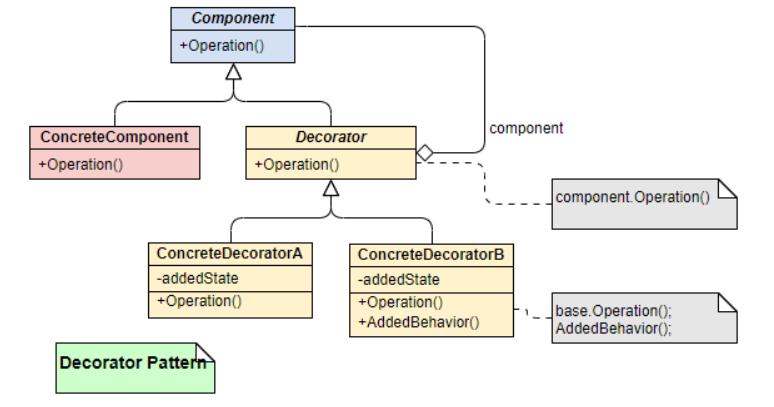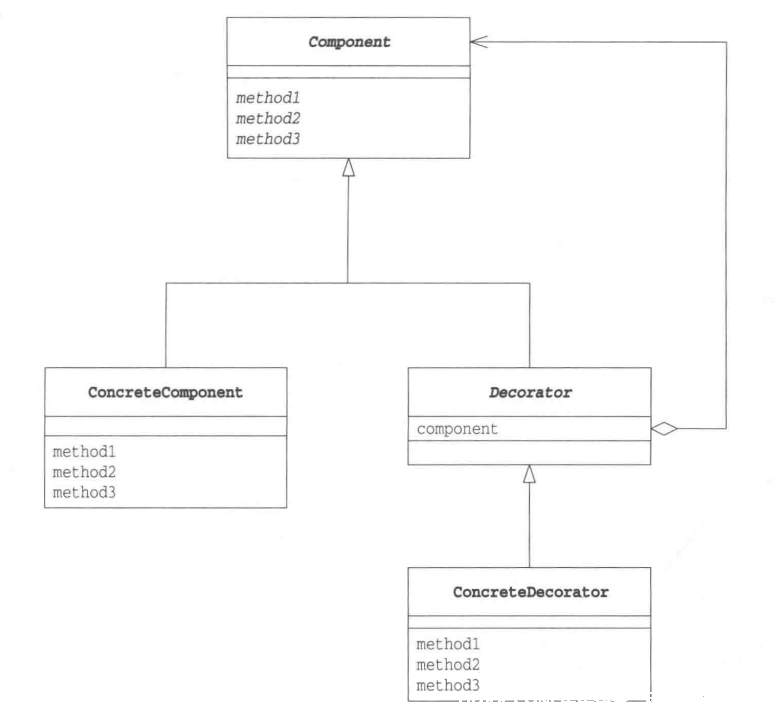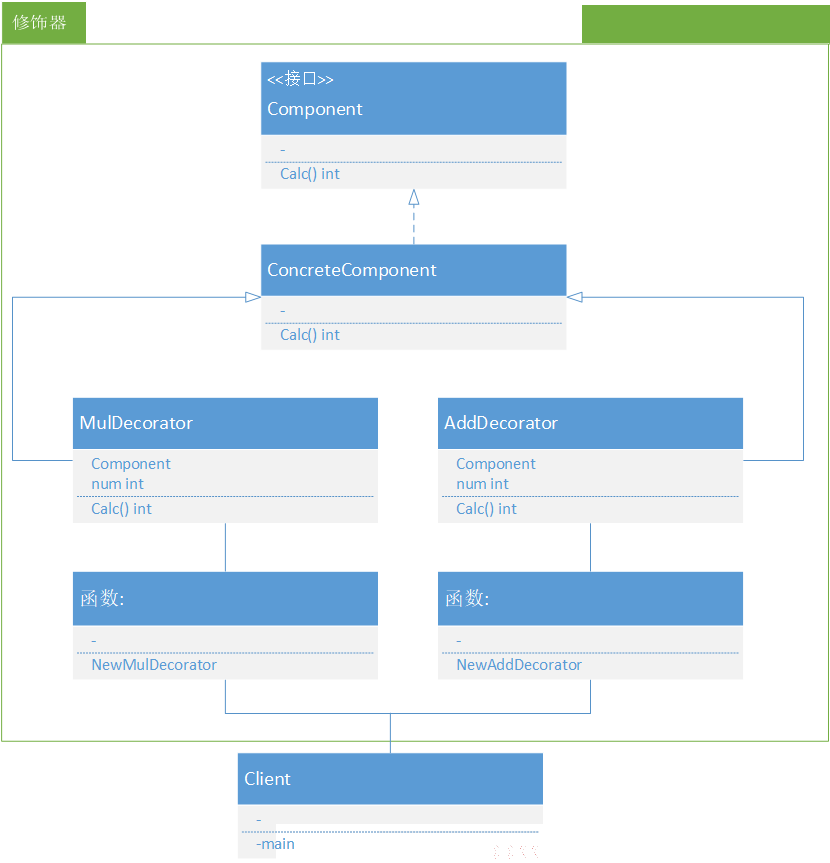12、 Golang 设计模式:12_装饰器模式
1、介绍
动态地给一个对象添加一些额外的职责。就增加功能来说,相比生成子类更为灵活。
装饰器(Decorator)模式,是一种在运行期动态给某个对象的实例增加功能的方法。

Component:
** **对象的接口类,定义装饰对象和被装饰对象的共同接口;
ConcreteComponent:
被装饰对象的类定义;
Decorator:
装饰对象的抽象类,持有一个具体的被修饰对象,并实现接口类继承的公共接口;
ConcreteDecorator:
具体的装饰器,负责往被装饰对象添加额外的功能;

2、示例
示例代码:
package main
import "fmt"
type Component interface {
Calc() int
}
type ConcreteComponent struct{}
func (*ConcreteComponent) Calc() int {
return 0
}
//乘法修饰器
type MulDecorator struct {
Component
num int
}
func (d *MulDecorator) Calc() int {
//return (d.Component.Calc()+1)*d.num
return d.Component.Calc() * d.num
}
func NewMulDecorator(c Component, data int) *MulDecorator {
return &MulDecorator{
Component: c,
num: data,
}
}
//加法修饰器
type AddDecorator struct {
Component
num int
}
func (d *AddDecorator) Calc() int {
return d.Component.Calc() + d.num
}
func NewAddDecorator(c Component, data int) *AddDecorator {
return &AddDecorator{
Component: c,
num: data,
}
}
func main() {
var c Component
//指针要先进行创建(初始化),不然直接赋值会出现空指针异常,即:给指针为nil的对象赋值
//错误提示:panic: runtime error: invalid memory address or nil pointer dereference
c = &ConcreteComponent{}
c = NewAddDecorator(c, 10) //先调用加
c = NewMulDecorator(c, 8) //在以上基础之上再执行乘法
fmt.Println("加计算结果:", c.Calc())
}
UML图:
